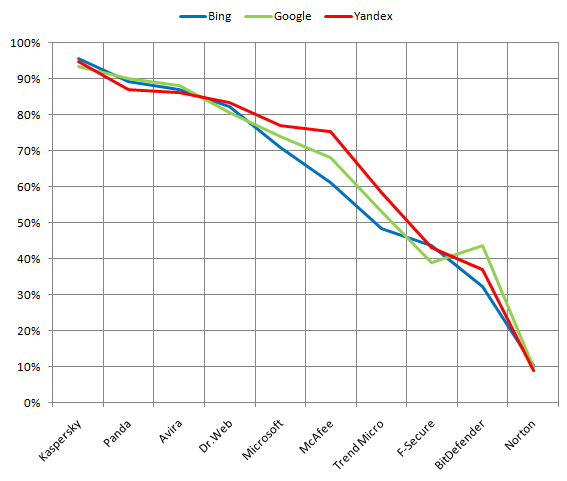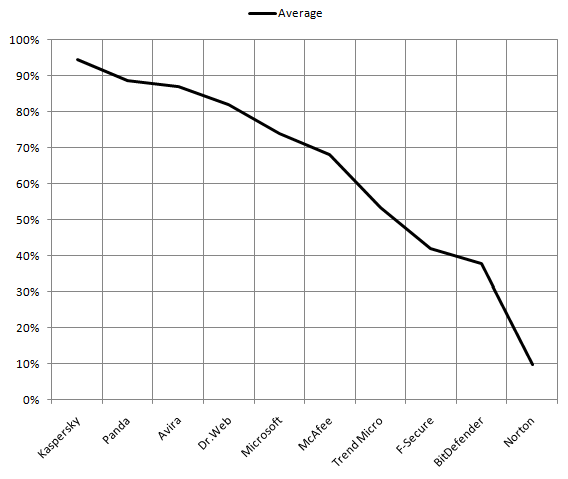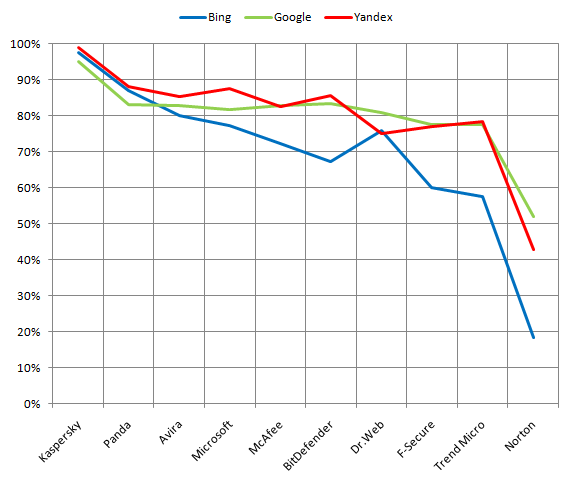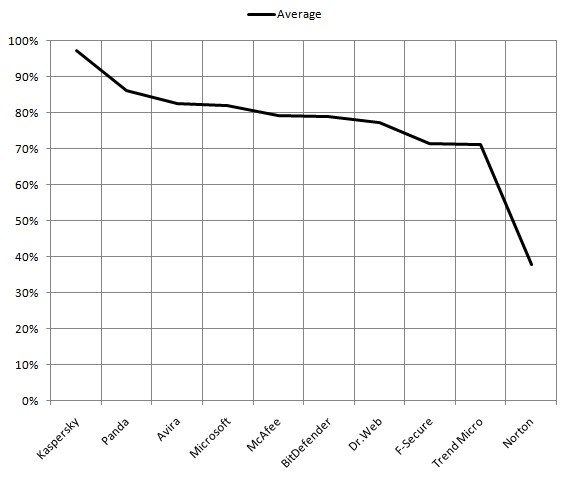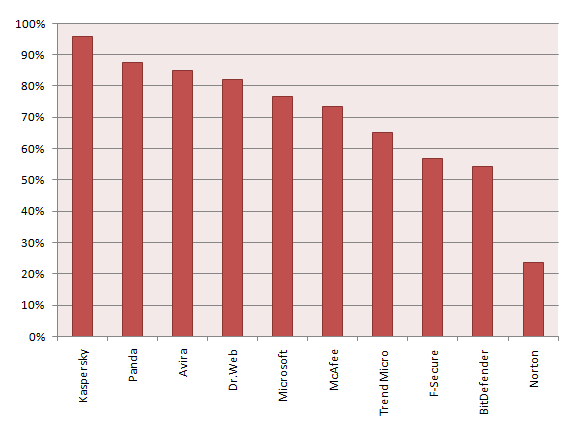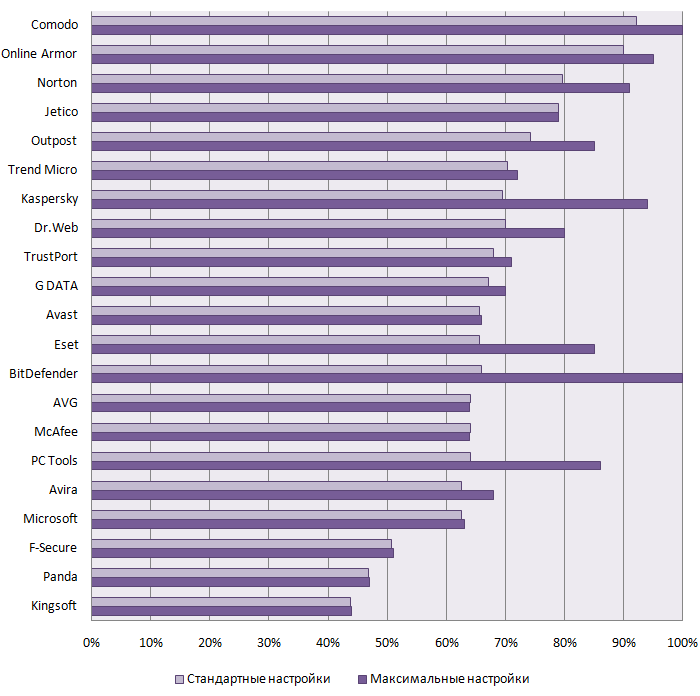Parental Controls Test (July 2010)
Table of Contents:
- Introduction
- Filtering Effectiveness Measurings
- Parental Controls Test Results and Awards
Introduction
Our test was the first in the world to check how really effective are these popular filters in protecting children from unwelcome Internet-sites. The test results should help parents to choose the best and most qualitative protection for their children familiarizing with the global network.
It's worth mentioning that we did not compare the products functions, any settings and functions availability in this test. We checked the filters performance based only on the assumption that a child has Internet access and parental control is customized in accordance to the manufacturer’s recommendations.
Testing methodology »
Testing results analysis and awards »
In the process of open discussion, we selected 9 complex PC protection products having parental control module (filtering web-sites that are unwelcome for children and teenagers). In addition, a free Microsoft parental control was selected for the test.
Finally, 10 products with parental control function were tested:
- Avira Premium Security Suite 10 (10.0.0.542)
- BitDefender Internet Security 2010 (13.0.21.347)
- Dr.Web Secure Space 6.0 (6.0.0.03100)
- F-Secure Internet Security 2010 (10.00 build 246)
- Kaspersky PURE (9.0.0.192)
- McAfee Internet Security 2010 (10.5.194)
- Norton Internet Security 2010 (17.7.0.12)
- Panda Internet Security 2010 (15.01.00)
- Trend Micro Internet Security 2010 (17.50.1674.0000)
- Microsoft Windows Live Family Security
Due to well-recognized limitations, we could not test all the possible internet-filters for children as well as special utilities. We assumed that all large-scale software companies have much larger resource basis for creating more qualitative unwelcome content filtering tools. That is why only well-known names can be found on the list.
The test was performed in June 2010 under Microsoft Windows 7x64 operating system with all updates installed. Microsoft Internet Explorer 8.0 was used as a standard operating system browser.
It is obvious that it is absolutely impossible to check parental control performance for all unwelcome web-sites. That is why the most important test objective was to select a representative link structure reflecting parental control performance correctly for the whole general class.
In accordance to test methodology we decided to confine ourselves to checking parental control for pornographic and erotic web-sites blocking only. To accomplish this, we selected 800 adult website links (400 in Russian and 400 in English) from Google, Bing and Yandex search systems by popular keywords. We do not publish the complete search queries list for censorship purposes; thus, it is available for vendors’ representatives on their demand only.
Filtering Effectiveness Measurings
To analyze the test results, we divided the general link structure into several categories. Thus, the results of checking the performance of filtering unwelcome websites found in different languages (Russian and English) in different search systems (Bing, Google and Yandex) are given in Tables 1-2 and Diagrams 1-4.
Table 1: Results of unwelcome websites blocking by Russian search queries
|
Russian |
Bing |
|
Yandex |
Average |
|||
|
Kaspersky |
383 |
96% |
374 |
94% |
379 |
95% |
95% |
|
Panda |
357 |
89% |
360 |
90% |
348 |
87% |
89% |
|
Avira |
348 |
87% |
353 |
88% |
345 |
86% |
87% |
|
Dr.Web |
329 |
82% |
323 |
81% |
334 |
84% |
82% |
|
Microsoft |
284 |
71% |
296 |
74% |
308 |
77% |
74% |
|
McAfee |
245 |
61% |
272 |
68% |
301 |
75% |
68% |
|
Trend Micro |
194 |
49% |
212 |
53% |
233 |
58% |
53% |
|
F-Secure |
175 |
44% |
156 |
39% |
172 |
43% |
42% |
|
BitDefender |
129 |
32% |
175 |
44% |
148 |
37% |
38% |
|
Norton |
41 |
10% |
39 |
10% |
35 |
9% |
10% |
Diagram 1: Results of unwelcome websites blocking by Russian search queries for different search engines
As we can see in Diagram 1, the difference between the performance of parental control blocking of unwelcome websites found by Russian search queries is quite insufficient. But though we can say that the websites found in Bing are blocked a little bit worse.
Diagram 2: Average results of unwelcome websites blocking by Russian search queries for all the search engines
As we can see from Diagram 2, only the first four products – Kaspersky RURE, Panda Internet Security, Avira Premium Security Suite and Dr.Web Secure Space – managed to block over 80% of web-sites that are unwelcome for children by Russian search queries. If Russian vendors just had to show high results by Russian queries then the results for Panda Internet Security and Avira Premium Security Suite turned to be quite unexpected.
Free “Windows Live Family Security” showed good results that are a little bit lower than the premium zone. The results of the other vendors cannot be recognized as good ones. Almost all the filters by famous Western companies are the least effective; as we can see they do not do well with Russian sites blocking.
As far as it concerns the blocking of unwelcome web-sites found by English keywords, the situation is much better here.
Table 2: Results of unwelcome web-sites blocking by English search queries
|
English |
Bing |
|
Yandex |
Average |
|||
|
Kaspersky |
391 |
98% |
380 |
95% |
396 |
99% |
97% |
|
Panda |
348 |
87% |
333 |
83% |
353 |
88% |
86% |
|
Avira |
320 |
80% |
331 |
83% |
341 |
85% |
83% |
|
Microsoft |
309 |
77% |
327 |
82% |
350 |
88% |
82% |
|
McAfee |
289 |
72% |
332 |
83% |
330 |
83% |
79% |
|
BitDefender |
269 |
67% |
334 |
84% |
343 |
86% |
79% |
|
Dr.Web |
304 |
76% |
324 |
81% |
286 |
75% |
77% |
|
F-Secure |
240 |
60% |
310 |
78% |
308 |
77% |
72% |
|
Trend Micro |
230 |
58% |
310 |
78% |
314 |
79% |
71% |
|
Norton |
73 |
18% |
208 |
52% |
171 |
43% |
38% |
Diagram 3: Results of unwelcome web-sites blocking by English search queries for different search engines
If we consider the division by search engines in Diagram 3 then we can see that the English web-sites found in Bing are blocked much worse. It might be due to the fact that the search engine gives other sites in the search results and most vendors cope with blocking them much worse.
Diagram 4: Average results of unwelcome websites blocking by English search queries for all the search engines
As we can see in Diagram 4, Kaspersky PURE, Panda Internet Security, Avira Premium Security Suite and “Windows Live Family Security” managed to block over 80% unwelcome sites by English search queries. The results for the other vendors except for Norton Internet Security are quite similar to each other and are a little bit lower than the premium results.
It is interesting and quite evident that the results for foreign products are much higher with the English web-sites than with the Russian ones. At the same time, the results of our Dr.Web Secure Space are vice versa much better for the Russian web-sites and much worse for the English ones.
The results for Kaspersky PURE stand apart as it turned out to be both very effective and out-of-reach for competitive web-sites found by the search queries for both language groups.
Parental Controls Test Results and Awards
The overall results of parental control performance for unwelcome website blocking irrespective of the search language are given in Diagram 4 and Table 3. According to the present awarding scheme, special awards are granted for the best parental controls.
Diagram 4: Overall results of unwelcome web-sites blocking
Table 3: Overall test results and awards
|
Parental Control |
Performance |
Award |
|
Kaspersky PURE |
96% |
|
|
Panda Internet Security 2010 |
87% |
|
|
Avira Premium Security Suite 10 |
85% |
|
|
Dr.Web Security Space 6.0 |
82% |
|
|
Microsoft Windows Live Family Safety |
77% |
Failed |
|
McAfee Internet Security 2010 |
74% |
|
|
Trend Micro Internet Security 2010 |
65% |
|
|
F-Secure Internet Security 2010 |
57% |
|
|
BitDefender Internet Security 2010 |
54% |
|
|
Norton Internet Security 2010 |
24% |
As we can see, Kaspersky PURE turned out to be much better than its competitors as it blocked 96% of unwelcome websites and deserved its high Gold Parental Control Award.
Panda Internet Security and Avira Premium Security Suite proved to be effective with the results 87% and 85% respectively and received Silver Parental Control Award. Dr.Web Secure Space was the last of four products that overcame the barrier of 80% with the Bronze Parental Control Award.
Alas, the other parental controls won no awards. But we earnestly hope that their results will be much higher in the future as such important thing as protection of children in the Internet must not be left aside without due attention.
But Microsoft Windows Live Family Security is really worth special attention. This product can be really considered as free alternative for those using modern operating systems like Windows Vista and Windows 7.
Ilya Shabanov, Managing Partner of Anti-Malware Teat Lab:
“When planning the first parental control test, we assumed that the overall industry results would be much higher. It seemed that large well-known vendors having a great experience of fighting various internet-threats would solve such simple problems as filtering the web-sites with unwelcome content easily. Unfortunately, we cannot recommend all the tested products having parental control function for the parents looking for good system that can protect their children from unwelcome content.
Furthermore, it turns out that even if we apply the best parental control our child will open every twentieth (or every fifth) adult website easily. If we try to extrapolate these test results to other web-sites that are unwelcome for children (such as propagating violence and drugs) I can be absolutely sure that their performance for the industry on the whole was even worse. Nevertheless, I am quite optimistic about the future and think that our test will compel the manufacturers to improve their built in parental control products.”
Vasily Berdnikov, Head of Testing Laboratory of Anti-Malware Teat Lab:
“The main objective of parental control is not to let a child view unwelcome content by chance when working on PC without any parental guidance. This test was performed as task-oriented search for porno- and erotic content. I think that 80% of blocked web-sites with this testing method is quite a good result. We can specially mark the results of Kaspersky Pure as children will have to work hard to see porno even with the task-oriented search in different languages. We can see that “Kaspersky Lab” gave special attention to the problem of protecting children from possible negative Internet influence.”
- Login to post comments

